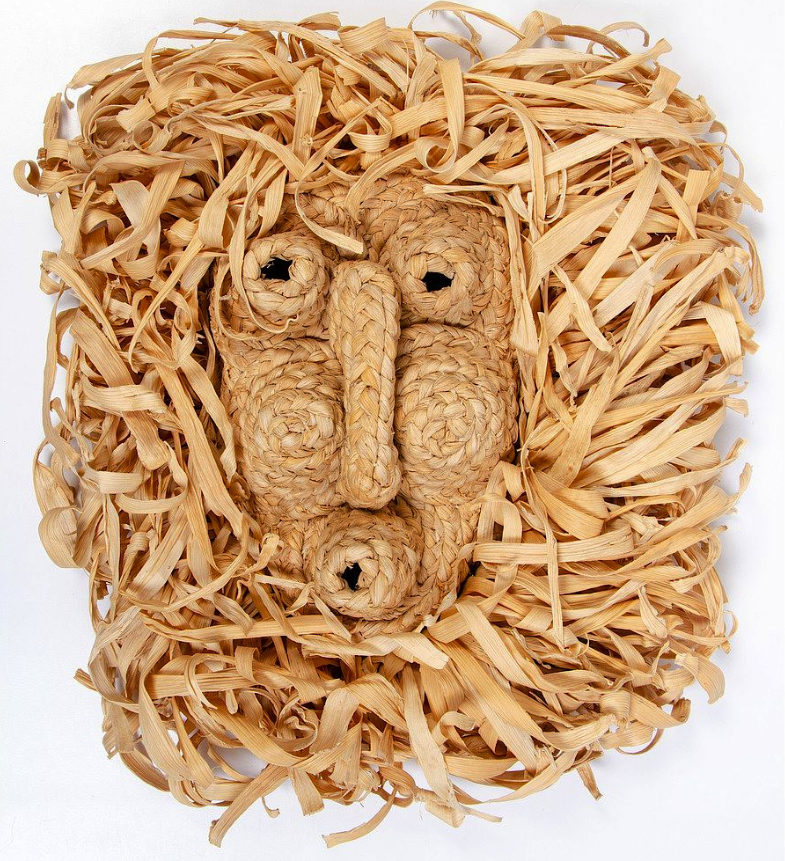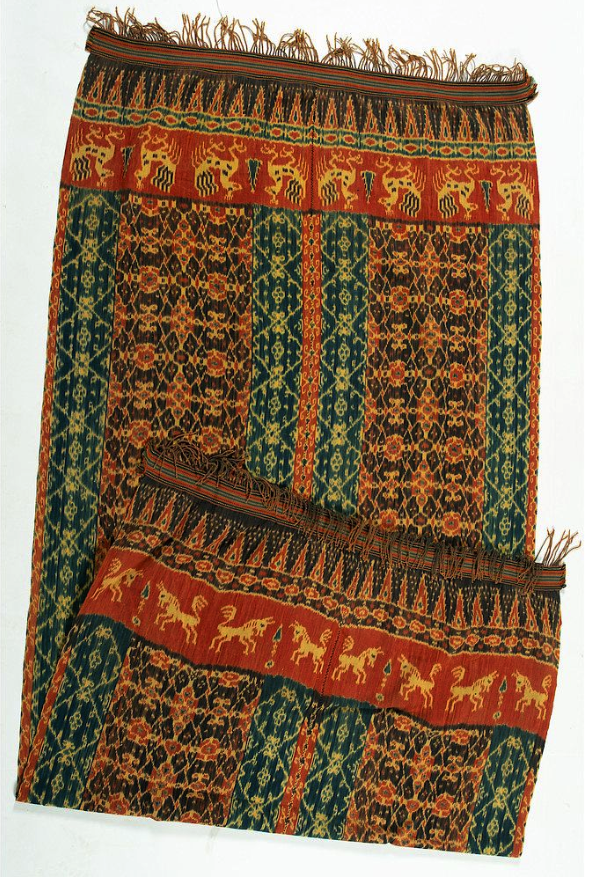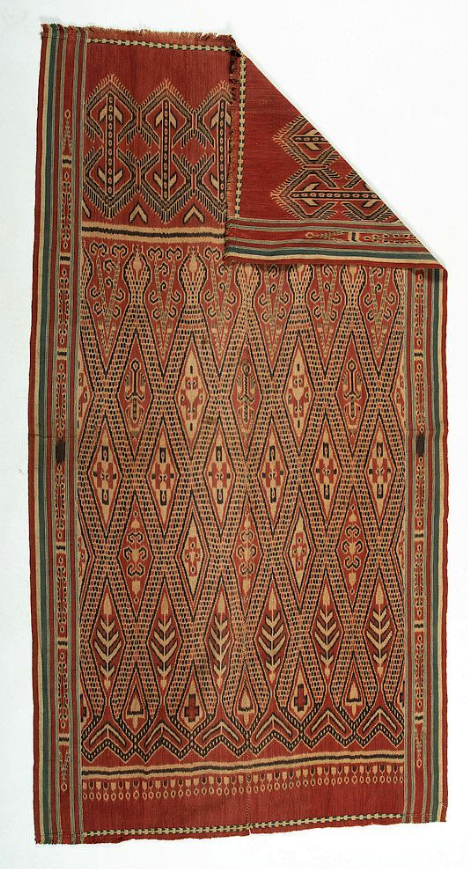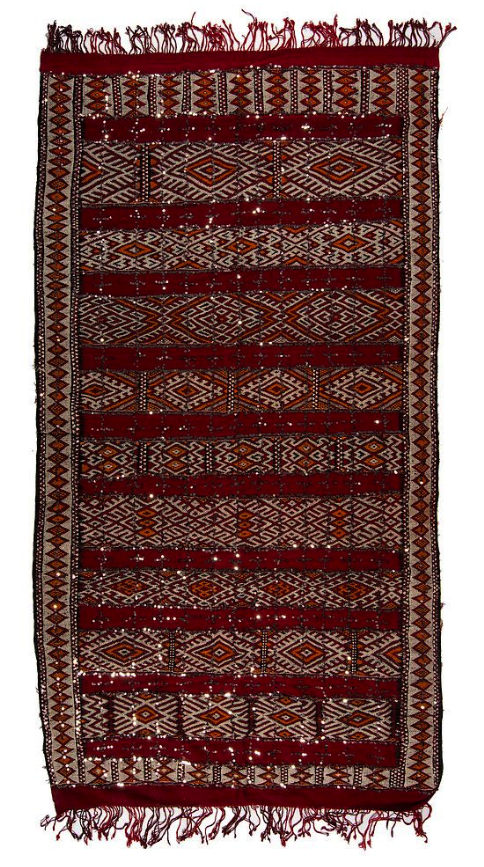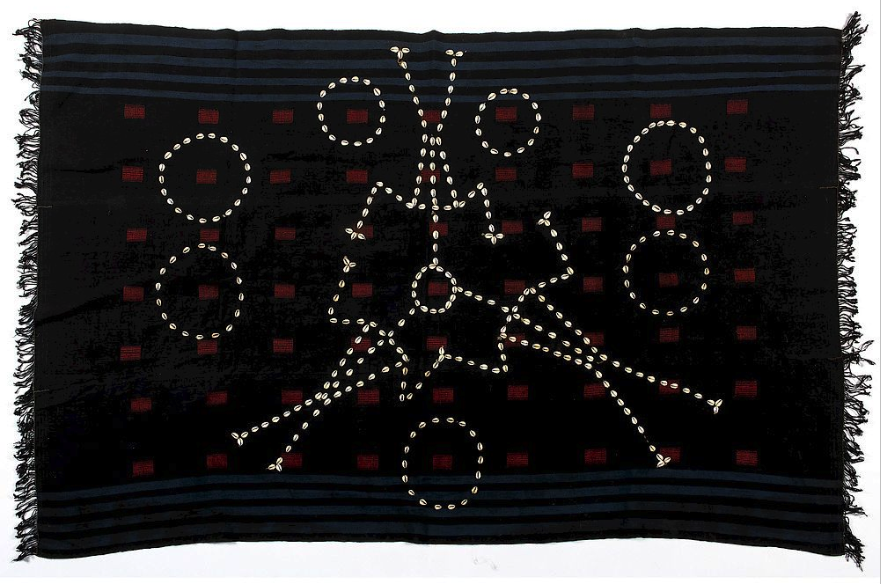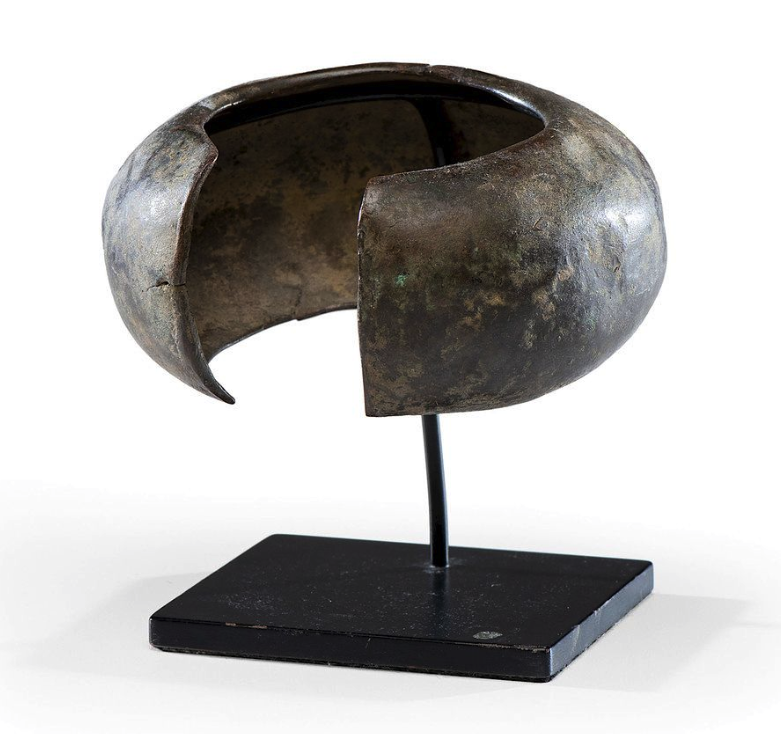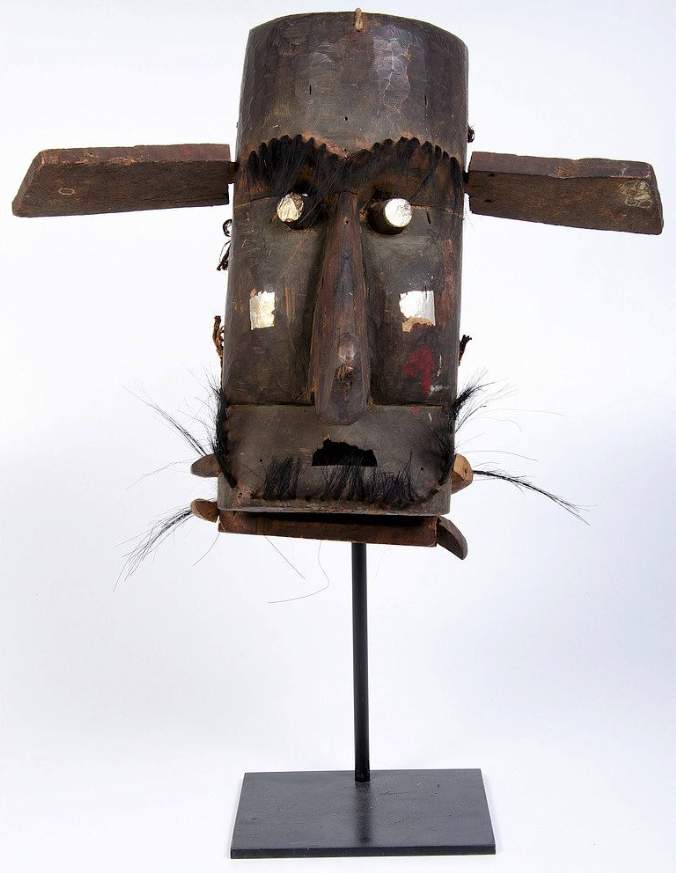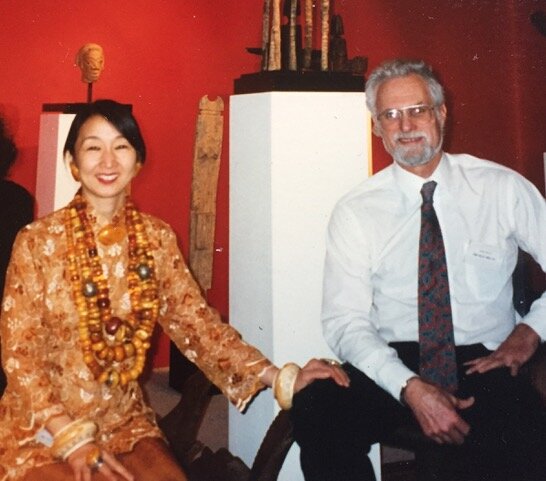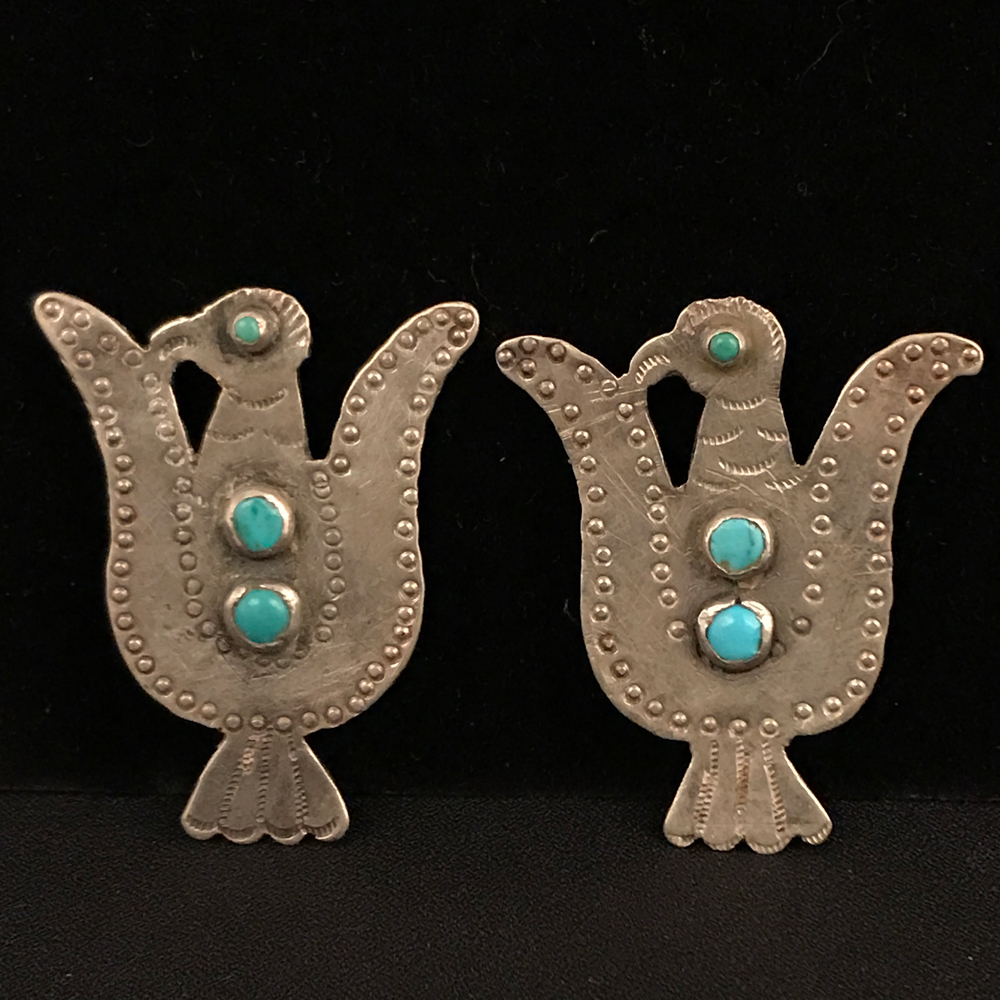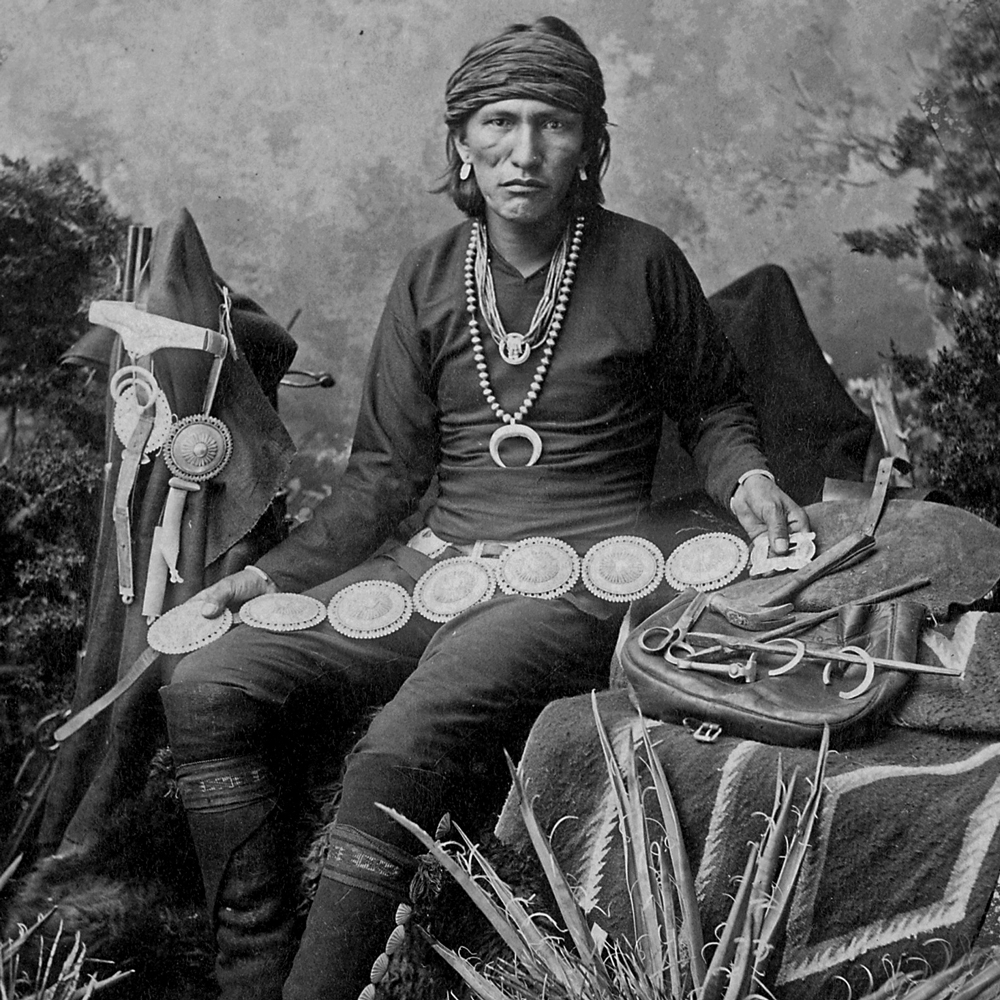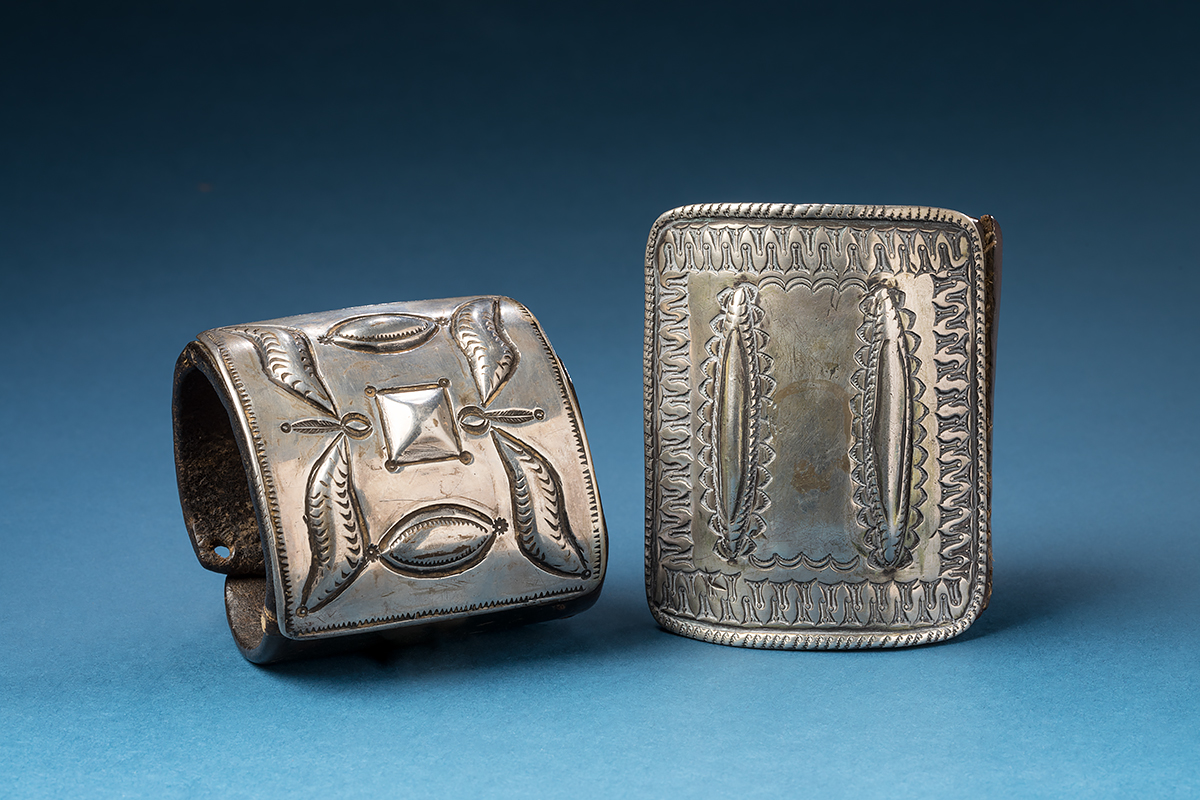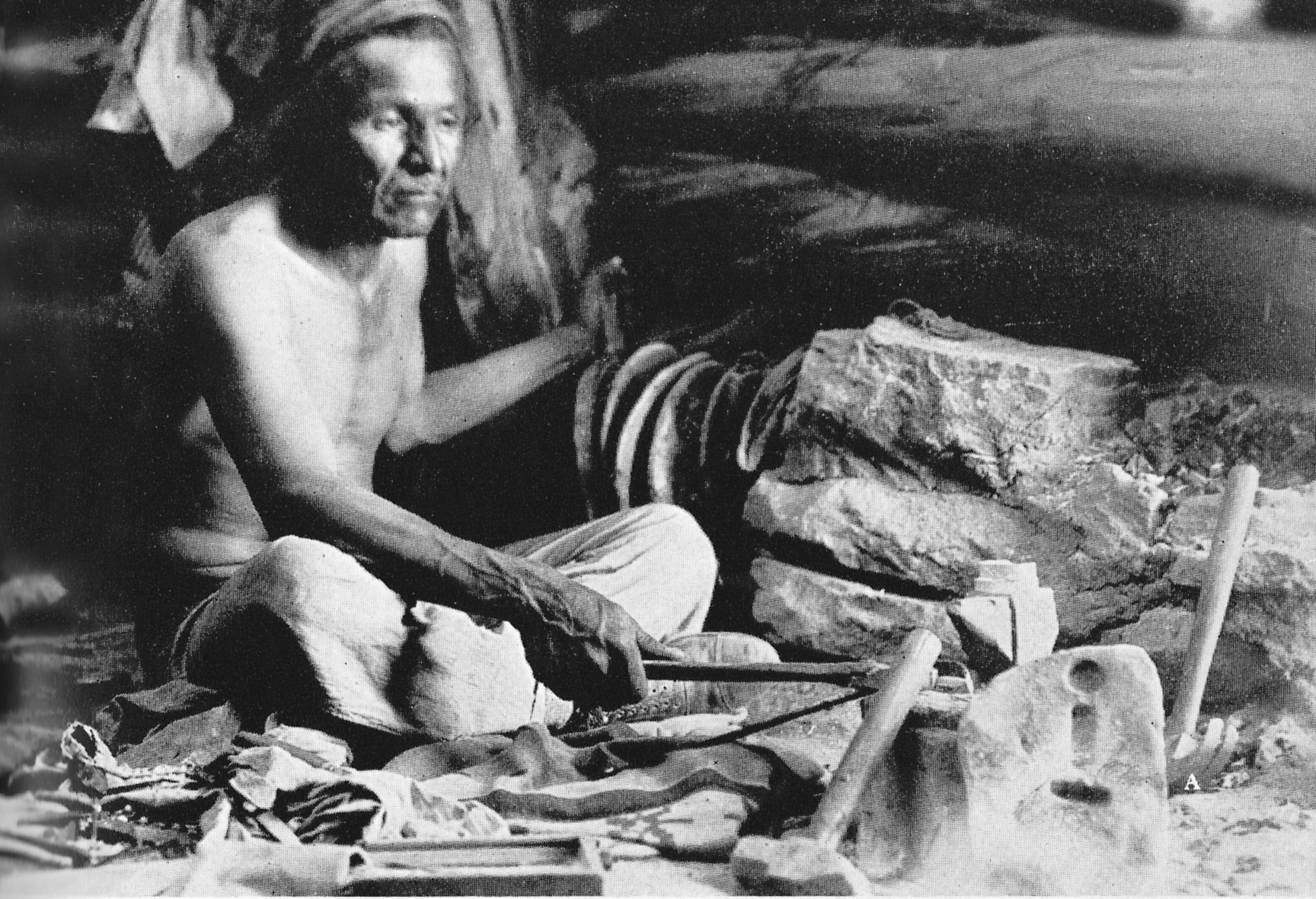On July 18, U.S. Senators Martin Heinrich (D-NM) and Lisa Murkowski (R-AK) introduced Capitol Hill to the latest (third) version of the thus-far-unsuccessful Safeguard Tribal Objects of Patrimony (STOP) Act.[1]
STOP is intended to “prohibit the exporting of sacred Native American items and increase penalties for stealing and illegally trafficking tribal cultural patrimony.”[2] The bill represents a response to some Parisian auction houses’ widely publicized sales of items over the vehement objections of representatives from tribes which hold those objects sacred.[3] If passed, STOP would, according to a wire service account,
ban collectors and vendors from exporting Native American ceremonial items to foreign markets….increase penalties within the United States for trafficking objects that tribes hold sacred by increasing prison time from five years to 10 years for violating the law more than once….At the same time, the bill would establish a framework for collectors to return protected items to tribes and avoid facing penalties.[4]
This legislative initiative’s cosponsors in the U.S. Senate include Tammy Baldwin (D-WI), Steve Daines (R-MT), Brian Schatz (D-HI), Martha McSally (R-AZ), Tom Udall (D-NM), and James Lankford (R-OK). A House version is on offer under the auspices of Representatives Tom Cole (R-OK), Ben Ray Luján (D-NM), Deb Haaland (D-NM), and Don Young (R-AK), with cosponsors including Betty McCollum (D-MN), Tom O-Halleran (D-AZ), Amata Coleman Radewagen (R-American Samoa), and Xochitl Torres Small (D-NM).
Institutional endorsers include Santa Clara Pueblo, Tesuque Pueblo, Zuni Pueblo, Nambé Pueblo, Wyandotte Nation, Native Village of Barrow, Mt. Sanford Tribal Consortium, Duckwater Shoshone Tribe, Susanville Indian Rancheria, Miami Tribe of Oklahoma, Mille Lacs Band of Ojibwe, Cherokee Nation, United South and Eastern Tribes, Eastern Band of Cherokee Indians, Hopi Tribe, Midwest Alliance of Sovereign Tribes, Sealaska Heritage, the National Association of Tribal Historic Preservation Officers, Tanana Chiefs Conference, and the National Indian Head Start Directors.[5]
This latest version of STOP is a significant development for just about anyone involved in the American Indian art world – especially when you consider that even after the legislative tinkering required following two previous attempts to put this legislation into the law books failed, STOP remains problematic.
Cultural Property News – a must-read for those participating in the world of indigenous art – performed a superb job in summarizing STOP, and I encourage you to give their analysis your attention.[6] In its current form, STOP exhibits potentially serious flaws and the sort of unclarified ambiguity that may help move legislation along but only creates problems down the road. ATADA’s president Kim Martindale is quoted in the article as noting of STOP:
It doesn’t just restrict export of sacred items. It requires a permit for items as low as $1 in value and keeps secret what can and can’t be exported. The way this bill is written, it can require every person carrying or shipping an Indian item out of the U.S., including small items purchased by tourists, to submit a photograph and a form through a federal system that will have to be created from scratch. To get an export permit each item will be subject to tribal review covering the 568 federally registered tribes, plus Hawaiian organizations and Alaskan villages. The review system will operate in secret, and without any time limit.
Again, I encourage you to read the Cultural Property News piece. Other goings on may suck the air out of the news sphere, but for anyone reading this column the 2019 STOP legislation could represent one of the most important legal issues you’ll confront for quite some time.
Covering the US’s Native American Graves Protection and Repatriation Act of 1990 (NAGPRA) – which I’ve done pretty much since it emerged from the swirl of confusion attending the Columbian quincentenary – sometimes seems a mixed blessing. This is especially the case when one’s intended audience is composed largely of curators, collectors, and dealers populating the world of tribal art; people who want and need to know how to deal with the purposes, nuances, and complexities of what remains a controversial piece of legislation.
The “mixed” part of the blessing comes up while attempting to indicate the ways in which NAGPRA’s interpretation and enforcement changes over time. I refer specifically to NAGPRA’s notices of intent to repatriate.
As this column’s regulars know, NAGPRA calls for the repatriation from organizations it broadly identifies as “museums” of Native American and Native Hawaiian objects falling into its categories of repatriation-eligible material: associated funerary objects, unassociated funerary objects, sacred objects, and objects of cultural patrimony.[7] Of these four categories, the latter two are typically of concern here. (As noted below, this rule of thumb is flexible and there are exceptions.)
Notices of intent to repatriate objects covered by NAGPRA from institutions the law broadly identifies as “museums” appear irregularly in the Federal Register.[8] Such a notice specifies the institution involved, the tribal entity or individual making the claim for return, the determination the institution and the claimant(s) reached about the object’s status under NAGPRA, and the identification of the party (or parties) to which the object will be repatriated (pending the filing of a competing claim or claims).
Unfortunately, some of those charged with carrying out the law’s provisions regarding repatriation of objects appear to be engaged – whether knowingly or otherwise, I cannot say – in issuing pronouncements which make the law considerably more opaque than transparent. Too many NAGPRA announcements exhibit a lazy sloppiness bordering on arrogant contempt for readers.
Since the NAGPRA notices of intent to repatriate that are summarized here may be the only source of information about the status of objects of interest to curators, collectors, and dealers, it is vitally important that information about repatriations (and the objects affected) should be presented in as clear and thorough a manner as possible.
When I go over a NAGPRA notice, I search for the main points so, even while that notice is distilled in this space, readers will be able to sense whether the outcome affects their bailiwick in the tribal art universe. Hopefully, they will also sense whether – responding to the pull of enlightened self-interest or commendable curiosity – they ought to inspect that notice in greater detail for themselves in the Federal Register.
Attempting to digest these notices with the eyes of a tribal art world curator, collector or dealer, inevitably leads to questions. Is the object identified in a way that affords a reasonably intelligent individual an opportunity for understanding exactly what it is? Is it described with a degree of clarity that allows for little in the way of confusion? Does the notice coherently set forth the object’s original purpose and role? Does the notice lay out a credible case for repatriation under NAGPRA?
Is a resounding “yes” on all counts too much to expect?
Perhaps it’s the old professor in me, but, increasingly, some of these notices read as if they were drafted with the goal of providing readers (and posterity) with as little information as possible.
Fortunately, the bulk of the notices summarized below – this current crop takes us up to June 3, 2019 – could serve as templates for NAGPRA’s notices of intent to repatriate. One can read most of them and come away with a pretty clear idea of just what type of materials are getting swept up into NAGPRA’s net and why.
As usual, the dates given here in connection the notices are those on which they appeared in the Federal Register. All quotations come from those notices.
Tlingit Oyster Catcher Rattle, Shaman’s Staff,
Shaman’s Hat, Shaman’s Spirit Helper
Unassociated Funerary Objects
Eiteljorg Museum of American Indians and Western Art, Indianapolis, IN (June 3, 2019): This column no longer routinely reports on NAGPRA notices of intent to repatriate unassociated funerary objects. They usually don’t attract obvious, compelling, and broad interest in the tribal art world. Occasionally, however, one of these notices finds its way to this space because it is of historical or other interest, particularly insofar as shining light onto the ways NAGPRA regards certain kinds of objects. This is one of those occasions, because it focuses on Northwest Coast material of precisely the sort that attracts broad interest in the tribal art community.
This notice’s drafter(s) made a concerted effort to take us beyond the we-have-this-and-they-said-that-so-now-it’s-gone type of presentations which show up too often in the Federal Register’s notices of intent to repatriate.
The collecting activities of Indianapolis businessman Harrison Eiteljorg (1903-1997) led to the creation of the eponymous museum associated with this notice. Eiteljorg’s expansive interests included the Northwest pieces referenced here – Oyster Catcher Rattle (circa 1870), Shaman’s Staff (c. 1880), Shaman’s Hat (c. 1800), and Shaman’s Spirit Helper (c. 1850) – all acquired by him between 1979 and 1981. Eiteljorg was a canny businessman and careful buyer, and it is not surprising that the pedigrees of these objects are linked to names which loomed large in the tribal art market of the late-1970s and 1980s.[9]
This notice provides solid descriptions of the objects in question. Picking out an object at random, we learn that the Oyster Catcher Rattle
is constructed from a single piece of wood, bears black, red, and light blue pigments. It has been halved and likely hollowed out to hold what may be seeds used to create its rattling sound. A leather cord is tied to one side of the rattle. The top of the rattle represents a long-billed bird. Near the handle is a wolf spirit with a protruding tongue. The underside is carved to depict what may be a beak.
According to representatives of the Central Council of the Tlingit & Haida Tribes, these four pieces – all of them provided with informative descriptions – are “cultural items used only by a shaman.”
Shaman’s implements would have been interred with a shaman. As it is against Tlingit custom to grant permission to disturb or disinter a shaman’s grave the Central Council believes that these four cultural items could have only been collected with removing them from a grave, and therefore, they are unassociated funerary objects [under NAGPRA]. Historic and contemporary scholarly research reiterate that traditionally, Tlingit shamans were buried with their accoutrements such as rattles, staffs, hats, and spirit helpers.
And, to seal the deal: “As indicated through museum records and consultation with the Central Council, the cultural affiliation of the cultural items is Tlingit. According to Tlingit oral tradition, the Tlingit people have owned and occupied southeastern Alaska since time immemorial.” This is enough for NAGPRA’s purposes to assist in the claim.
It was agreed that these objects should be returned to the Central Council of the Tlingit & Haida Indian Tribes in Alaska.
Kumeyaay Stone Pendants, Pestle, Slab, Figures, and Pipe (or Sucking Tube), and Bone Whistle Fragments
Objects of Cultural Patrimony
University of San Diego, San Diego, CA (June 3, 2019): In 1994, the museum was given “one set of bone whistle fragments; two stone pendants; one miniature stone pestle; one stone slab with pictograph; two stone figures; five ceramic pipes; and one stone pipe or sucking tube.” These came from unidentified sites in San Diego County and were obtained sometime during a forty-year-long period commencing in the 1950s.[10]
San Diego County “is recognized as the aboriginal area of the people of the Kumeyaay Nation and all 13 bands of the Kumeyaay Nation were invited to consult.” From these consultations, specifically as a result of interaction with representatives of Jamul Indian Village of California (a Kumeyaay Nation component), “tribal members recognized these objects as having been important to their village members, and spoke of how they were used both in the past and present. They related stories of learning about objects similar to these from tribal members.” The final determination? “These thirteen objects are likely culturally significant to all the bands of the Kumeyaay Nation.” (Yes, “likely” does sort of jump out of that sentence, but sufficient for NAGPRA’s purposes.)
It was decided to repatriate the pieces to the Campo Band of Diegueno Mission Indians of the Campo Indian Reservation; Capitan Grande Band of Diegueno Mission Indians (Barona Group of Capitan Grande Band of Mission Indians of the Barona Reservation; Viejas (Baron Long) Group of Capitan Grande Band of Mission Indians of the Viejas Reservation; Ewiiaapaayp Band of Kumeyaay Indians; Iipay Nation of Santa Ysabel (previously identified as the Santa Ysabel Band of Diegueno Mission Indians of the Santa Ysabel Reservation); Inaja Band of Diegueno Mission Indians of the Inaja and Cosmit Reservation; Jamul Indian Village; La Posta Band of Diegueno Mission Indians of the La Posta Indian Reservation; Manzanita Band of Diegueno Mission Indians of the Manzanita Reservation Mesa Grande Band of Diegueno Mission Indians of the Mesa Grande Reservation; San Pasqual Band of Diegueno Mission Indians; and the Sycuan Band of the Kumeyaay Nation, all of California.
Hopi Butterfly Dance Tablita
Sacred Object
Pueblo Grande Museum, Phoenix, AZ (M, 2019): In 1983 a patron gave the museum a Hopi Butterfly Dance tablita, a headdress made of painted wooden slat-like components. (“Tablita” comes from the Spanish tabla, which in this instance may be taken as meaning a board, plank, or slab.) Unfortunately, the notice provides no information about the appearance of the tablita, its painted design(s), or vintage.
Although tablita headdresses are worn by some of the tribe’s katsinim during appearances in public plaza dances, they are perhaps most commonly associated with the tribe’s Butterfly Dance. The notice informs us that because “representatives of the Hopi Tribe of Arizona demonstrated the Tribe’s cultural affiliation with this object, and established that the object was needed for use by girls during a traditional Hopi ceremony,” the tablita qualified as a sacred object that should be transferred to the Hopi Tribe.
Thirty-Two Diverse Karuk Objects
Sacred Objects/Objects of Cultural Patrimony
Autry Museum of the American West, Los Angeles, CA (May 3, 2019): This sweeping notice, a model for such proclamations, embraces thirty-two objects formerly in the collections of the Southwest Museum of the American Indian.[11] All of them are categorized under NAGPRA as both sacred objects and objects of cultural patrimony. Here is an abbreviated listing of the material involved:
an otter fur dance belt and a woven horsehair dance belt….one pipe [with steatite bowl] and one leather pouch….one large [half-a-foot wide and nearly a yard-long] and 33 1/2 -inches obsidian blade….one wooden stool, one [yew] bow, and one bone whistle….one rattle wand, one deerskin, two netted hangers, one case for feathers, one grass apron, and one bow with six arrows….four jump dance baskets….one head right made of deerskin and woodpecker feathers, two eagle don head plumes…one headband made of porcupine quills, two headbands made from sea lion teeth, one dance apron made from a ring-tail pelts [sic], one quiver made from fisher pelt and eight arrows…one wolf hair blinder, two otter fur blinders…two hangers made from woven plant fibers with feathers….one deerskin dress….one dentalium [shell] necklace.
These objects came to the museum between 1918 and 1985 (most during the 1930s) through purchase, exchange, and donation. All were identified as emanating from the Karuk people of northern California.
As noted earlier, this notice of intent to repatriate could serve as an exemplar for all such announcements. This is because it tells us quite a bit about all of the pieces under review.
That massive, six-inches-wide, almost yard-long obsidian blade, for example? We learn it was collected in an area long associated with the Karuk and that “the size, material, and design of the blade is typical of Karuk ceremonial blades.” Further, “Karuk representatives explained during consultation that this blade was used during the White Deerskin Dance, where large ceremonial obsidian blades are carried by the participants who lead the dance.” This leads to support for the formulaic NAGPRA statement that “it is a specific ceremonial object and is required by the Karuk Tribe…to properly perform the traditional religious dances and prayers for the White Deerskin Dance,” which makes it a sacred object. Finally, “Karuk representatives explained during consultation that medicine pieces, although cared for and used by individuals, were owned collectively and could not be sold or traded by individuals.” This makes the blade an object of cultural patrimony.
That quartet of jump dance baskets? “Karuk representatives stated during consultation that due to the designs on the baskets, the characteristics of their construction, and evidence of wear from use, these jump dance baskets were use in the Jump Dance and were not made for sale. Anthropological and historical information also demonstrate that these objects are Karuk objects used in the Jump Dance.”
The entire collection was slated for repatriation to the Karuk Tribe in northern California.
Please note: This column does not offer legal or financial advice. Anyone requiring such advice should consult a professional in the relevant field. The author welcomes readers’ comments and suggestions, which may be sent to him at legalbriefs@atada.org
EndNotes:
[1] The text of the proposed law (S. 2165 and H.R. 3846) is at https://www.congress.gov/bill/116th-congress/senate-bill/2165/text?q=%7B%22search%22%3A%5B%22Safeguard+Tribal+Objects+of+Patrimony%22%5D%7D&r=2&s=2
[2] “Bipartisan, Bicameral STOP Act To Safeguard Tribal Items Introduced,” (July 18, 2019 press release from the office of U.S. Representative Tom Cole), https://cole.house.gov/Bipartisan-Bicameral-STOP-Act-Introduced
[3] Mary Hudetz, “U.S. lawmakers propose ban on export of tribes’ sacred items,” (Associated Press: July 18, 2019), https://www.adn.com/nation-world/2019/07/18/us-lawmakers-propose-ban-on-export-of-tribes-sacred-items/
[4] Ibid.
[5] “Bipartisan, Bicameral STOP Act to Safeguard Tribal Items Introduced.”
[6] “2019 STOP Act: Fixing a Flawed Indian Art Bill: Undermining Established Public Policy Is Harmful to Museums, Businesses, Native Artists, and Tourism,” Cultural Property News (July 24, 2019), https://culturalpropertynews.org/2019-stop-act-fixing-a-flawed-indian-art-bill/
[7] Definitions of the last two of these categories occasionally appear in this column. For further information, I direct you to “NAGPRA Glossary,” National NAGPRA (National Park Service, U.S. Department of the Interior, n.d.) https://www.nps.gov/nagpra/TRAINING/GLOSSARY.HTM
[8] The Federal Register can be found online at https://www.archives.gov/federal-register/the-federal-register
[9] According to the notice: “The Oyster Catcher Rattle [dated circa 1870] was previously owned by John A. Buxton of Shango Galleries, and was purchased by Harrison Eiteljorg in [sic] November 15, 1979….The Shaman’s Staff, dated circa 1880, was purchased by Harrison Eiteljorg from Tom Julian, in June 1980. It was originally owned by Howard Roloff….The Shaman’s Hat, dated circa 1800….was purchased by Harrison Eiteljorg from Sotheby’s, Parke-Bernet in April 1981. The Shaman Spirit Helper, dated circa 1850, was purchased by Harrison Eiteljorg from Richard Rasso in April 1981.”
[10] These pieces came from the donation that forms the institution’s David W. May Collection, for which see “David W. May Collection,” University of San Diego, University Galleries (2019), https://www.sandiego.edu/galleries/collections/david-w-may-collection.php
[11] In 2003, the Southwest Museum, an iconic institution founded in Los Angeles in 1907 by photographer, preservationist, journalist, archaeologist, and Indian rights activist Charles F. Lummis (1859-1928), with the Autry Museum of the American West (originally called the “Gene Autry Western Heritage Museum” in honor of its chief benefactor).





